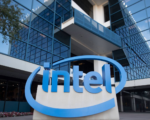Sony Consoles Typically Achieve Over 100 Million Sales Within Five Years.
Intel recently faced a major setback in its pursuit of expanding its contract manufacturing business by losing the opportunity to design and fabricate the chip for Sony’s upcoming PlayStation 6. This decision, made in 2022, has significant implications for Intel, particularly as it seeks to establish itself in the highly competitive semiconductor market. Sources familiar with the situation indicate that this loss represents a critical moment in Intel’s efforts to rebound from previous challenges and regain its footing in the industry.
The competition for the PlayStation 6 chip contract was intense, with Intel and Advanced Micro Devices (AMD) emerging as the final contenders. This bidding process was not just about securing a contract; it represented a strategic opportunity for Intel to generate billions of dollars in revenue and enhance its production capabilities. Winning the contract would have allowed Intel to fabricate thousands of silicon wafers each month, significantly boosting its manufacturing output and providing a vital source of income amid a rapidly changing market landscape.
AMD ultimately won the contract, signaling a notable shift in the semiconductor landscape. This victory underscores AMD’s growing reputation as a formidable competitor, particularly in the gaming industry. As the PlayStation 6 is poised to be a flagship console for Sony, the choice of AMD for its chip design reflects the company’s ability to meet the demanding performance and efficiency standards required for such a high-profile product.

For Intel, the ramifications of this loss extend beyond immediate revenue concerns. The company has been grappling with various challenges, including delays in its product roadmaps and increasing competition from other semiconductor manufacturers. Losing the PlayStation 6 contract further complicates Intel’s efforts to rejuvenate its brand and regain market share in key segments. This situation highlights the pressure Intel faces to innovate and deliver high-performance solutions that can compete effectively with AMD and other rivals.
The PlayStation 6 is expected to be a significant leap forward in gaming technology, and the choice of chip manufacturer will play a crucial role in its success. As gamers increasingly demand enhanced graphics, faster load times, and immersive experiences, the capabilities of the chip will be central to meeting those expectations. The decision to select AMD over Intel for this pivotal project signals a growing confidence in AMD’s technological advancements and its ability to deliver on high-performance gaming applications.
Moving forward, Intel must focus on bolstering its research and development efforts to regain its competitive edge. The company needs to prioritize innovation, efficiency, and customer relationships to secure future contracts and rebuild its reputation within the semiconductor industry. While the loss of the PlayStation 6 chip contract is a setback, it could also serve as a catalyst for Intel to reevaluate its strategies and push for greater advancements in technology that resonate with the demands of the evolving market.

















